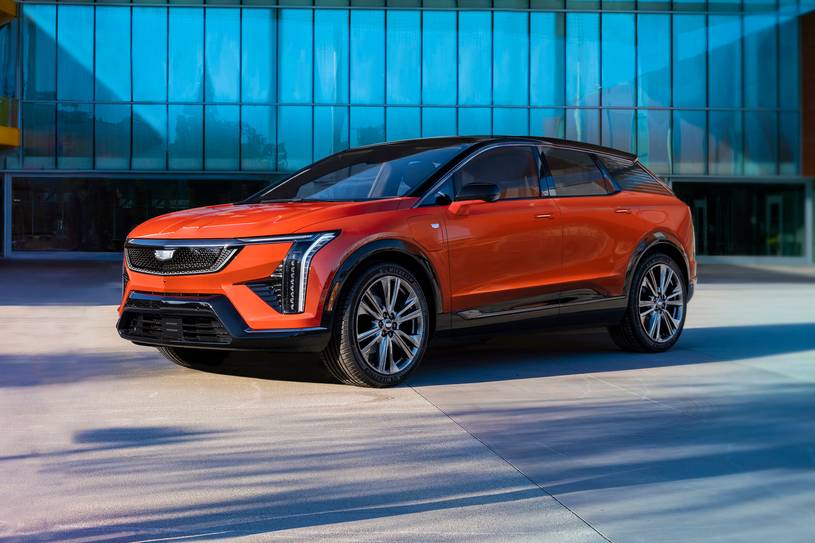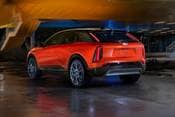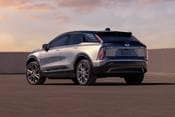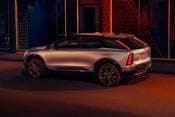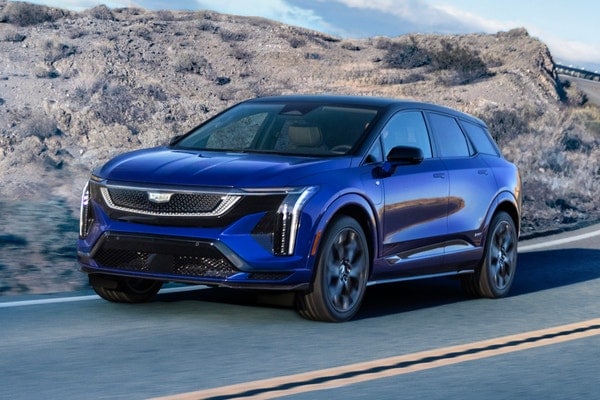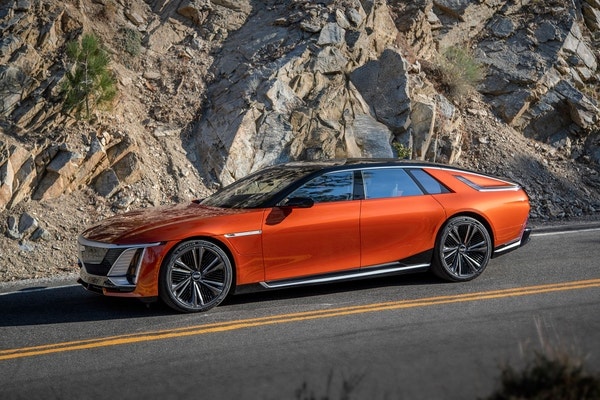Cadillac is quietly — yet deliberately — building one of the most complete EV lineups in the automotive industry. It started with the Lyriq SUV and will soon encompass five different nameplates, including the full-size Escalade IQ, three-row Vistiq and Rolls-Royce-fighting Celestiq sedan.
But today we’re focused on a much more important product: the Optiq. This small SUV will serve as the entry point into Cadillac’s electric world, and after spending a day with the Optiq in and around San Francisco, it appears to be an altogether complete package that should easily bring new customers to General Motors' luxury brand.
You get a little more for a little less
The Optiq is about 6 inches shorter and 2 inches narrower than the larger Lyriq, and because of that, uses a smaller battery. The Optiq has an 85-kWh battery pack and two motors, so it comes standard with all-wheel drive. There’s a large motor on the front axle that does most of the heavy lifting, supplemented by a smaller one out back, which combined deliver 354 horsepower and 480 lb-ft of torque. Cadillac quotes an EPA-estimated range of 302 miles for the Optiq, but based on our experience with other GM electric vehicles, we expect it'll do slightly better on the Edmunds EV Range Test.
Compared to its larger sibling, the Optiq is only down a few miles of range, and it has roughly the same amount of power as the rear-wheel-drive Lyriq. For context, the all-wheel-drive Lyriq does have quite a bit more power, with 515 hp. But the Optiq has an extra ace up its sleeve: Super Cruise, which I consider to be the best hands-free driving system available today. It's standard here, but weirdly, it's optional on the more expensive Lyriq.
Driving the Optiq
The Optiq shares its roots with the humble Chevy Equinox EV. But Cadillac did an outstanding job differentiating the Optiq from its less expensive cousin. Aside from the very angular shape of the windshield and windshield pillar, there’s basically nothing tying the two together. The Optiq is a handsome little thing with great proportions; it wears Cadillac’s EV design language well.
The Optiq is quieter, too. Even at highway speeds, the cabin is nice and serene. This SUV genuinely feels like a luxury car, and not just a rebadged subcompact SUV with extra leather.
The Optiq comes with something called Passive Plus dampers, which are tuned to give the vehicle a more dynamic and — in theory, anyway — better driving experience. In the real world, the Optiq does just fine on a twisty road but isn’t anything to write home about. It feels heavy from behind the wheel, and you don't really get the sense that it enjoys being pushed. The few times I did pick up the pace, the Optiq’s front-wheel-drive bias made itself known almost instantly with pretty substantial torque steer, where the nose of the car seems to get a little unhinged under hard acceleration.
The Optiq has plenty of power, so you can quickly pass someone on the freeway, and it’s easy to be smooth with the throttle. There's also one-pedal driving, which will bring the Optiq to a complete stop without the driver needing to touch the brake pedal. I love this feature in EVs, and General Motors really knows how to smoothly tune this tech.
Impressive work inside
Older Cadillac models like the XT4 are boring as heck inside, with bland materials and an uncreative layout. The Optiq kicks this trend right in the face with a fresh interior full of great, colorful material choices.
The door panels and center console have textured fabric that looks like something you'd find in a Volvo (that's a compliment). The control knobs have shiny metal, and there are cool details all over the place. Even the seats are impressive with heating, ventilation and massage functions. Over a half day of driving, these seats felt great, with good back and butt support.
Front and center is Cadillac's curved 33-inch display that houses all of the information for the driver and passenger. The crisp-looking screen has bright colors and fast response times. However, it lacks Apple CarPlay; Cadillac does not offer this smartphone-mirroring tech in any of its EVs. I personally think this is a huge mistake, but at least the native system does a good job filling the void with Google Maps and Google Assistant connectivity. The Optiq also offers Dolby Atmos audio through an optional 19-speaker AKG sound system, though you currently need an Amazon Music subscription to use it.
Behind the front seats, the Optiq has decent room in the second row with enough headroom and legroom for your average adult. Families with small kids in car seats might want to consider a larger vehicle, but for everyone else, the space is usable. Same goes for the cargo area, where the Optiq has 26 cubic feet of storage behind the second row. That’s a bit more than you’ll get in the Audi Q4 e-tron and enough to carry a few suitcases without issue.
On sale now
The Cadillac Optiq is already available at dealerships. It undercuts the Lyriq, starting at $56,390 including a $1,495 destination charge. If you want a fully loaded Optiq, you'll spend about $60,000, which is a bargain compared to many competitors. Audi’s Q4 e-tron starts at $50,000, but pushes north of $60K by the time you add comparable options. Similarly, the Volvo EX40 starts in the mid-$50K range, but also stretches beyond what the Cadillac costs when you load it with options.
The luxury EV space doesn't have many great values, but the Cadillac Optiq is definitely one of them.
